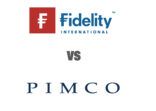The current market backdrop has created a “bittersweet” situation with regards to fixed income, with investors best positioned by focusing on issuers on the boundary between investment grade and high yield as a result, according to Nordea Asset Management (Nordea AM).
Ever since the US Federal Reserve began hiking rates, there has been no shortage of asset managers who have declared that “fixed income is back”, with most of the interest geared towards investment grade rather than high yield, despite the latter’s stronger performance this year.
Insofar as there has been interest in high yield, most of this has towards the so-called “fallen angels”, in other words companies that entered the high yield universe in the wake of the pandemic and still had strong balance sheets.
However, Nordea AM takes a more nuanced view, even though it still advocates investment grade over high yield, preferring credit in the middle range (triple B to single B space), which it says can offer the best trade-off between duration and spread on the one hand and a balanced risk profile on the other hand.
“Rates could stall for a while, with deposits and high-quality assets yielding anywhere between 3% and 4%. This leaves ground to a bittersweet status quo for credit markets: corporate bonds offer record high yields across rating categories, a welcome ally to outpace still elevated inflation that threatens real returns, but high interest rates could weigh on the overall economic tissue, triggering a recession in the old continent in the quarters to come,” said Laurent Gorgemans, global head of investment management at Nordea AM.
“The current backdrop hence calls for investment solutions able to offer an attractive level of yield above 3-4% while at the same time being well equipped to navigate a potential economic slowdown or a deterioration of sentiment within credit.”
Indeed, despite increasing predictions in many quarters that the Fed is now finished hiking interest rates, Nordea AM’s baseline forecast is for one more rate hike before the end of 2023, with rate cuts unlikely until towards the back end of next year at the earliest.
“Stubbornly higher inflation (maybe driven by higher oil/energy prices) and low unemployment could keep adding pressure to monetary authorities, delaying the first interest cuts beyond the current expectations,” said Claus Vorm, senior portfolio manager and deputy head of multi assets at Nordea AM.
Valuation gap among equities
Regarding equities, Nordea AM notes that the rise of the so-called Magnificent Seven – Apple, Microsoft, Amazon, Nvidia, Alphabet, Tesla and Meta – which now make up more than a quarter of the capitalisation of the S&P 500, has led to a major valuation gap between large cap stocks and beaten down small and mid-cap stocks.
Overall, Nordea AM stresses the importance of bottom-up stock picking, which is especially the case in China, where despite the widespread pessimism this year that has confounded policymakers, the Scandinavian asset manager says still presents attractive opportunities in industries aligned with the government’s long-term priorities.
Nordea AM also likes India at the moment, despite the fact that at 23.10x currently, the MSCI India index is widely viewed as overvalued. Nordea AM singles out favourable demographic and economic factors as well as structural reforms.
“The Indian equity market has shown resilience despite valuations which can sometimes be described as demanding. These valuations can be justified by the fact that the country offers some of the highest quality businesses with a large runway for growth given the low GDP per capita at around $2,000 and a very appealing demographic dividend, in a context where various structural reforms implemented in the last decade are now bearing fruit,” said Pierre-Henri Cloarec, portfolio manager of Nordea’s emerging stars equity and emerging stars ex-China equity strategies.
It particularly likes Indian banks, which it says benefits from an “abysmally low” penetration rate of financial products currently and a new growth credit cycle.
It also singles out other markets in Latin America, including Brazil, which is a popular pick among asset managers currently given the fact that the country is further advanced than most other markets in its rate-cutting cycle.

















